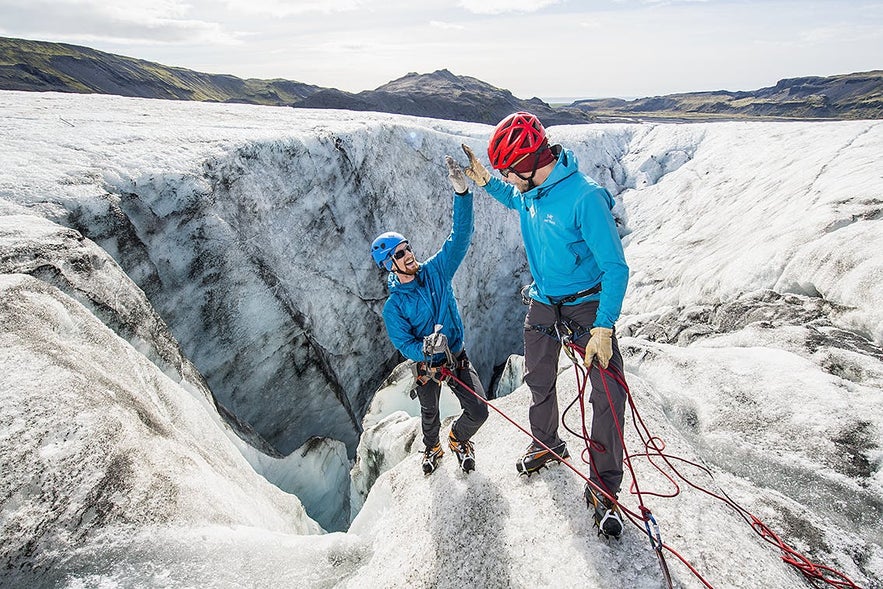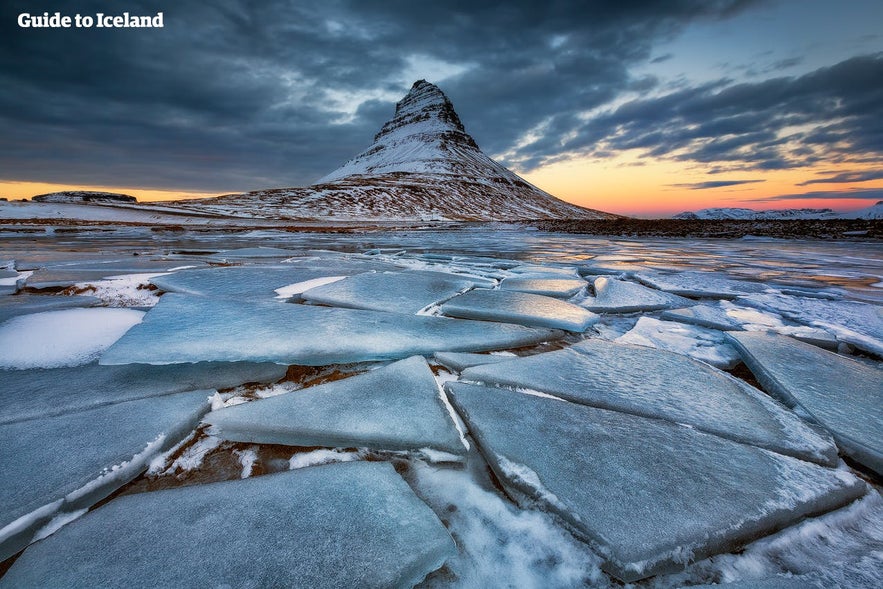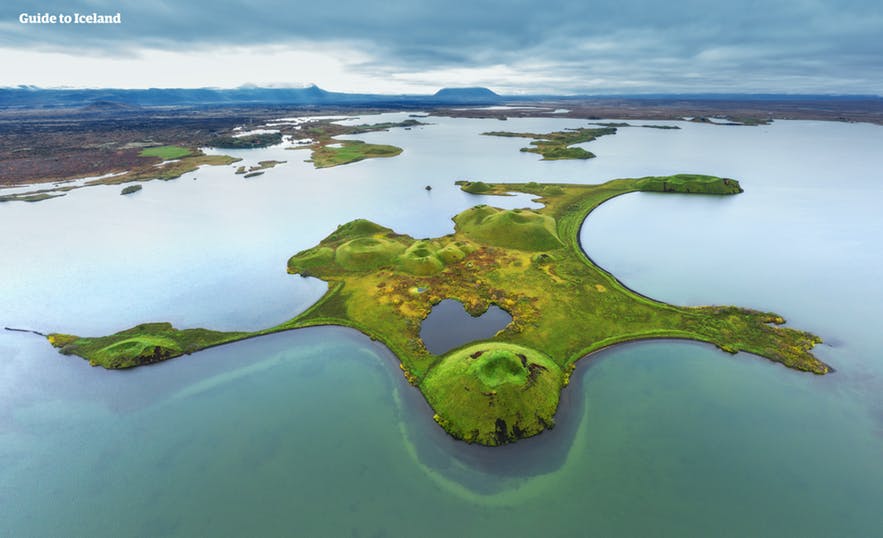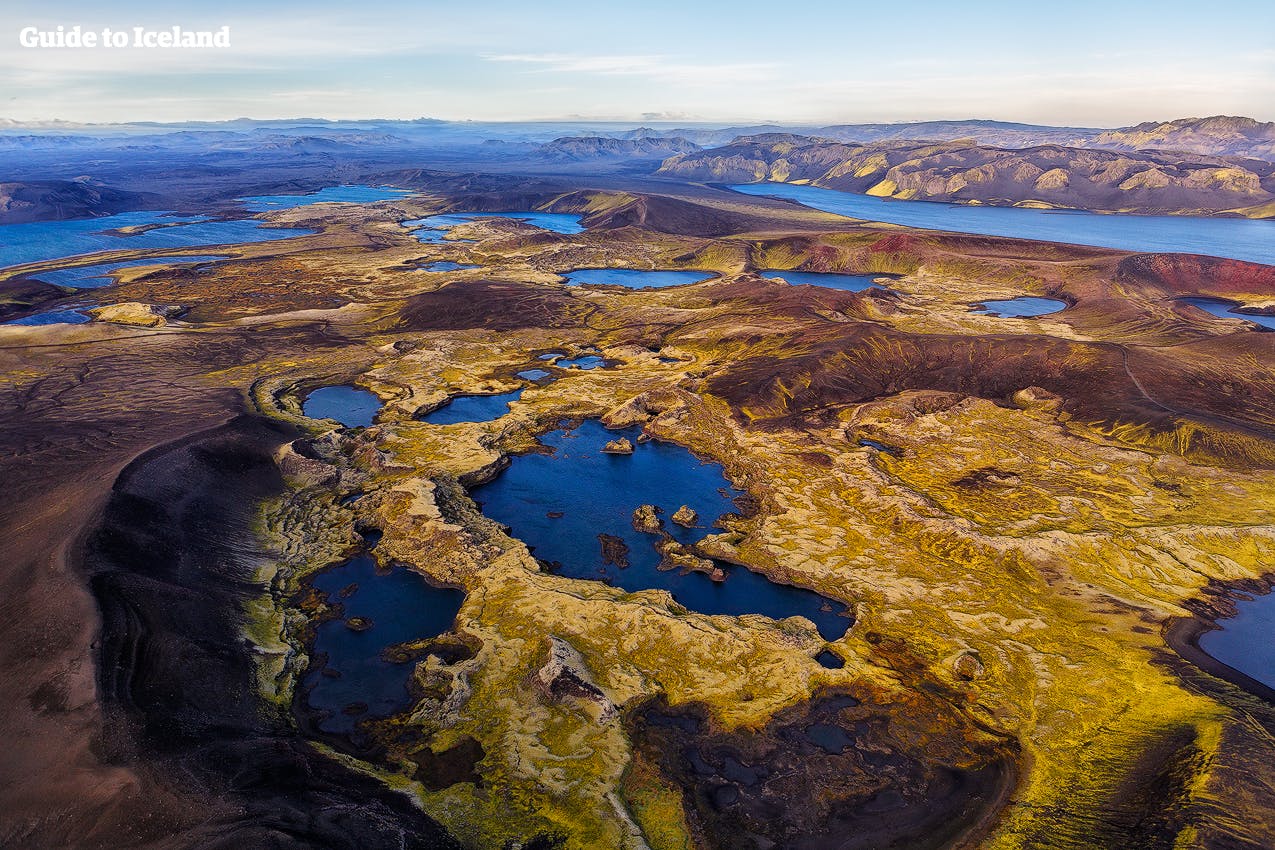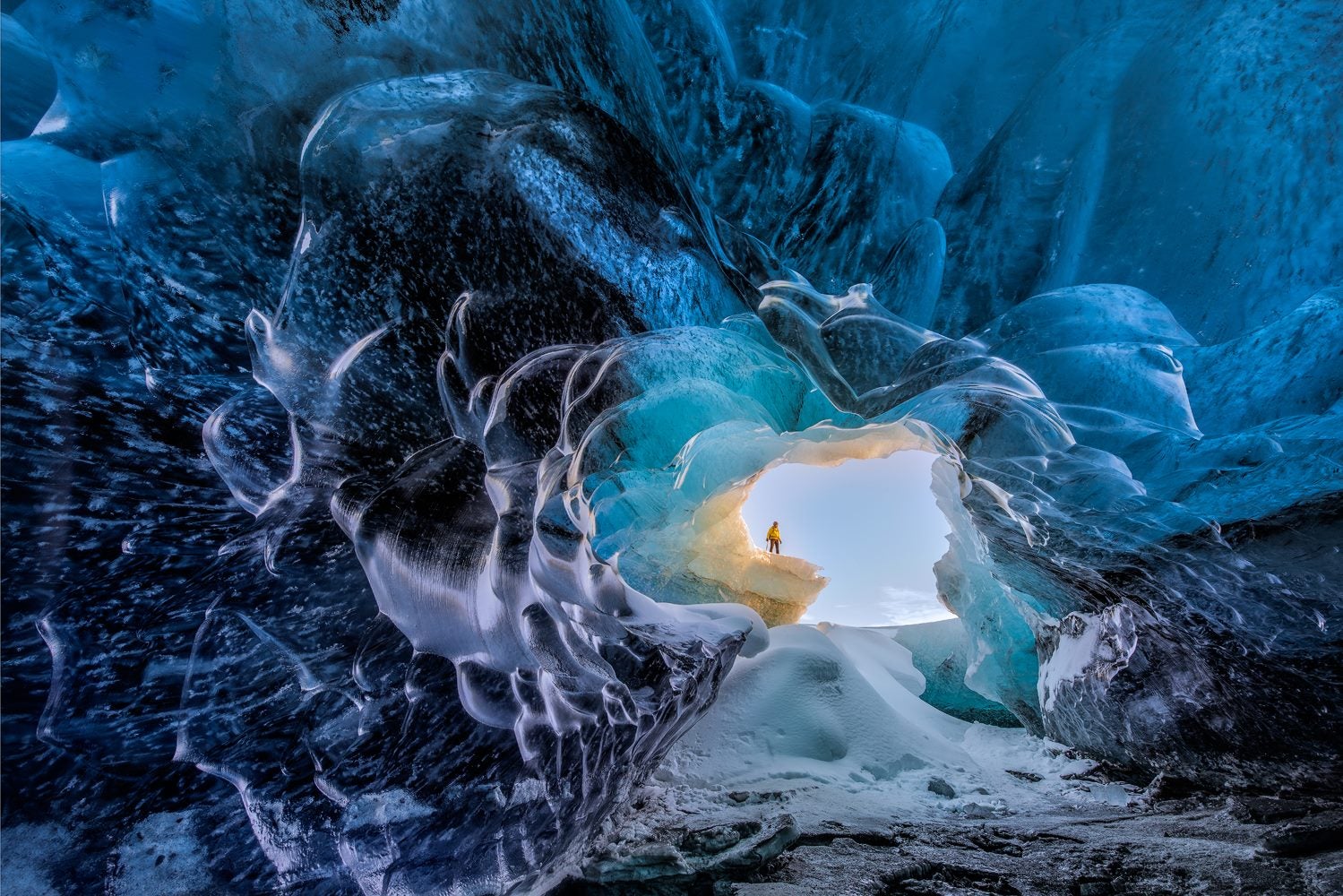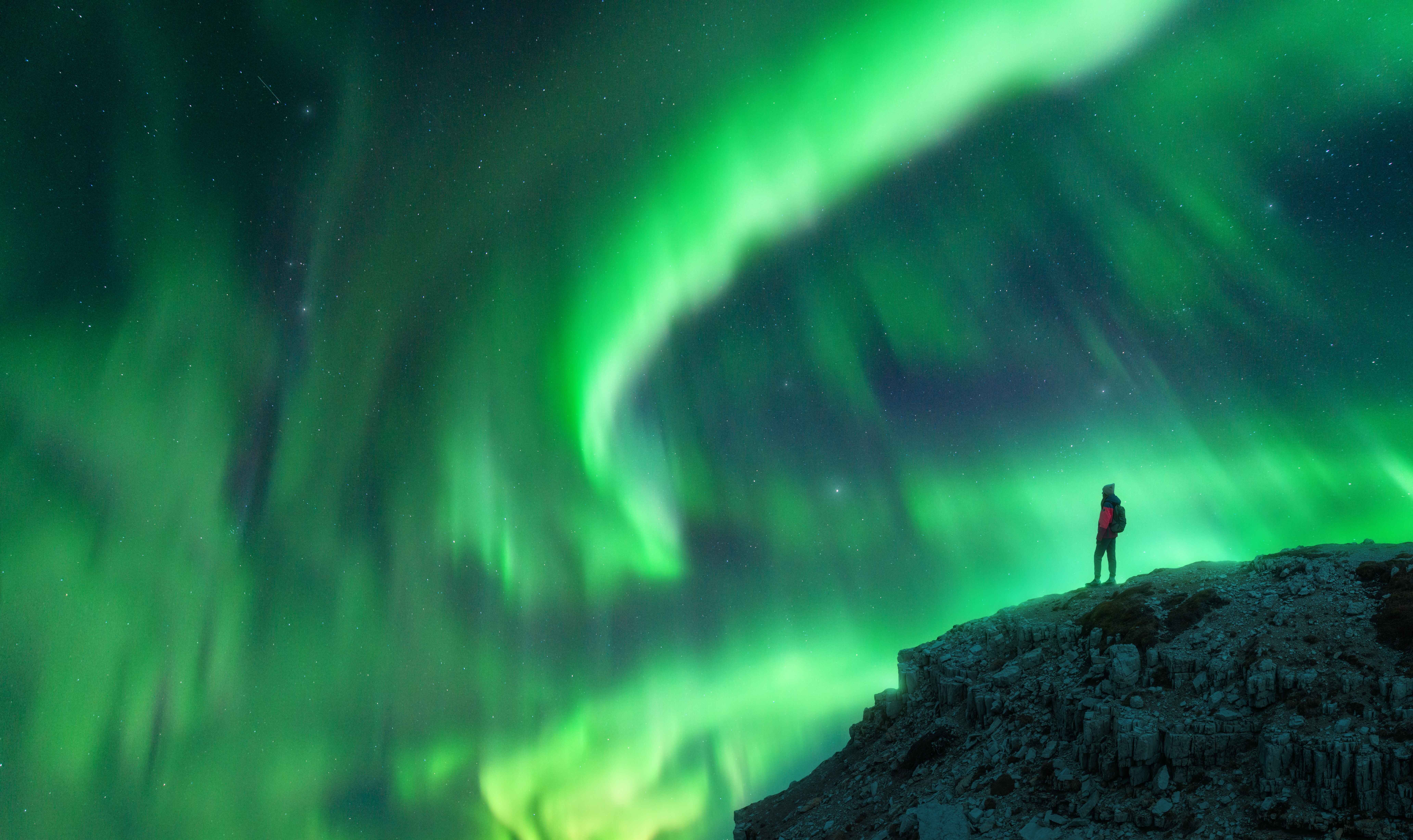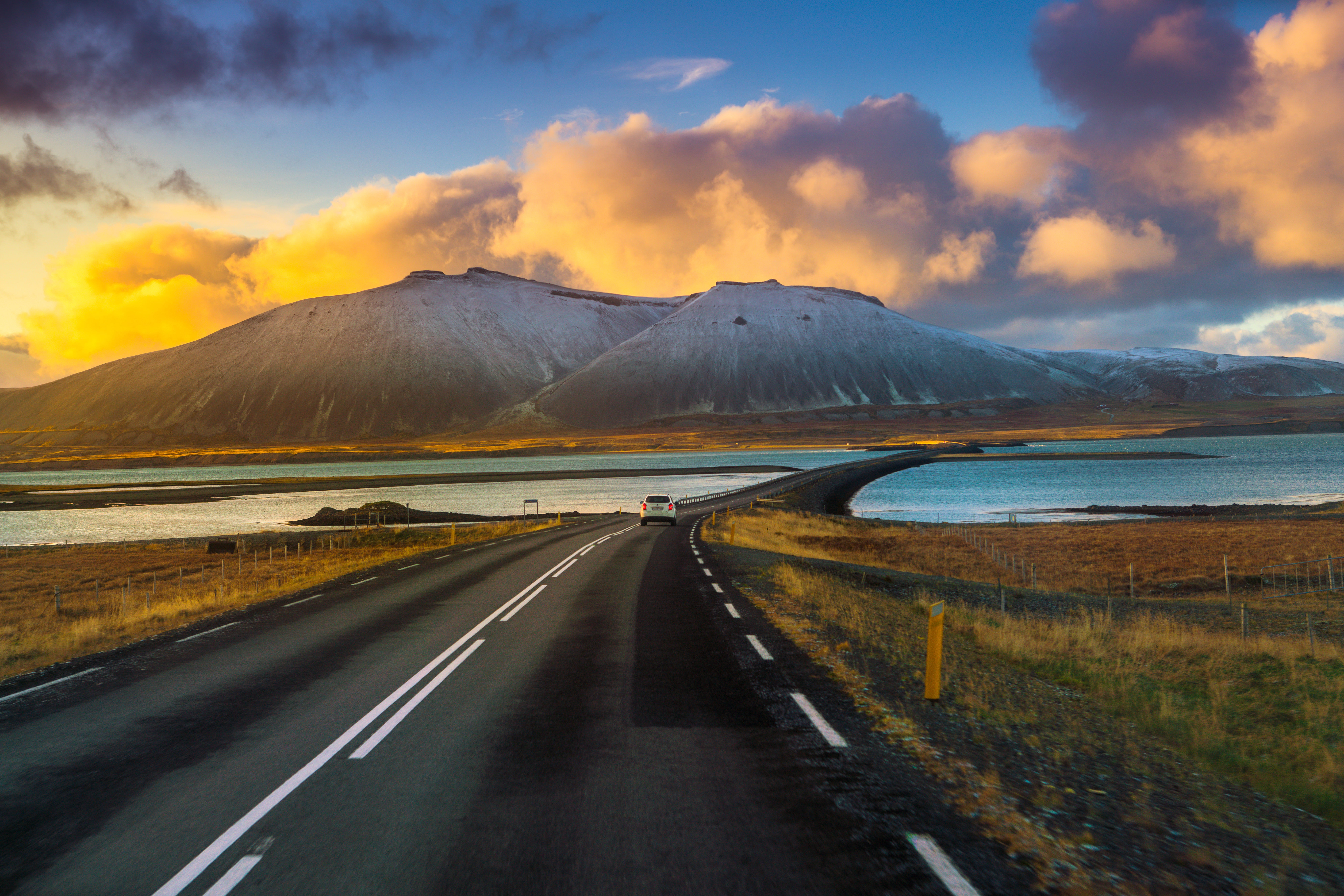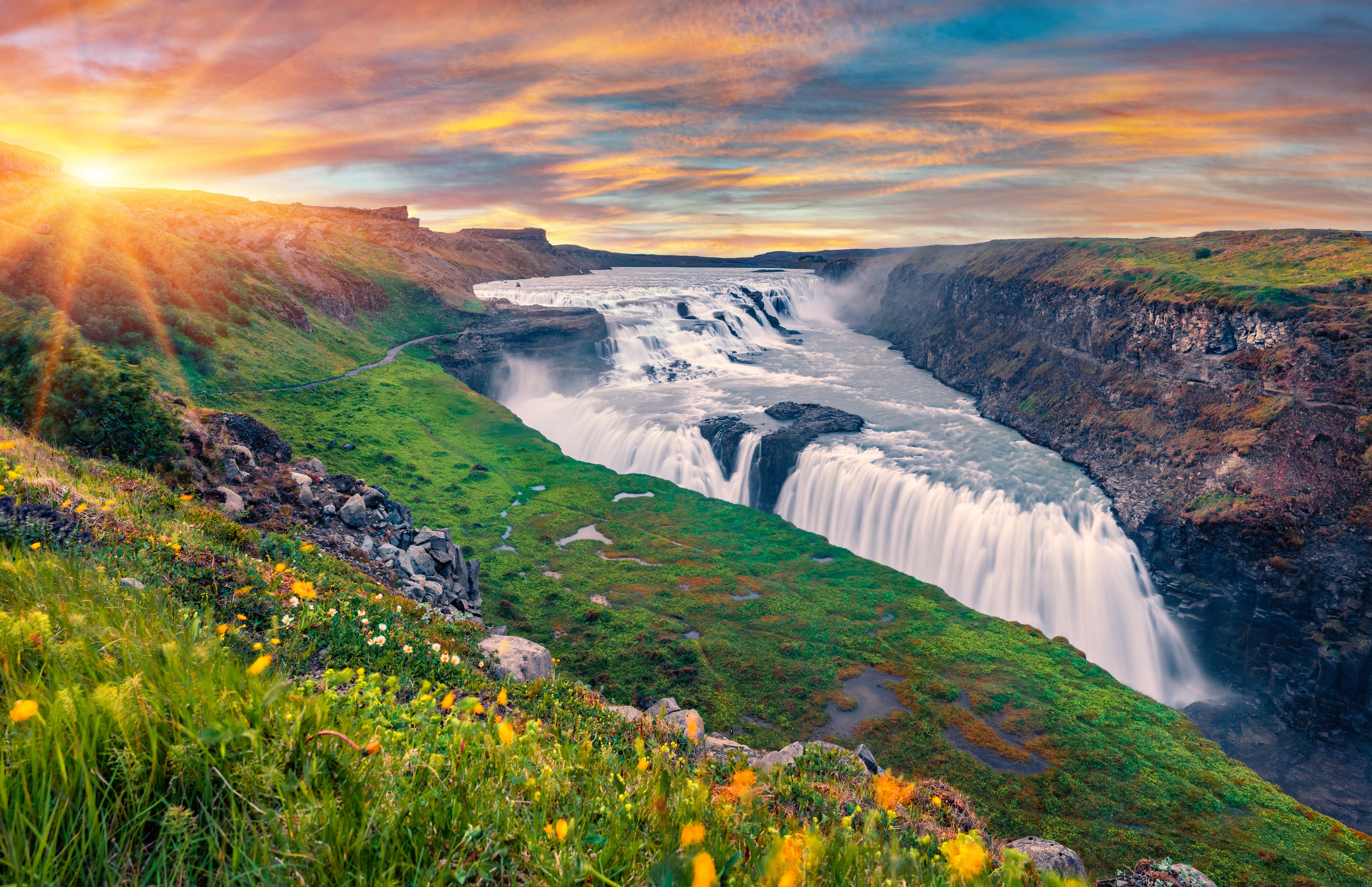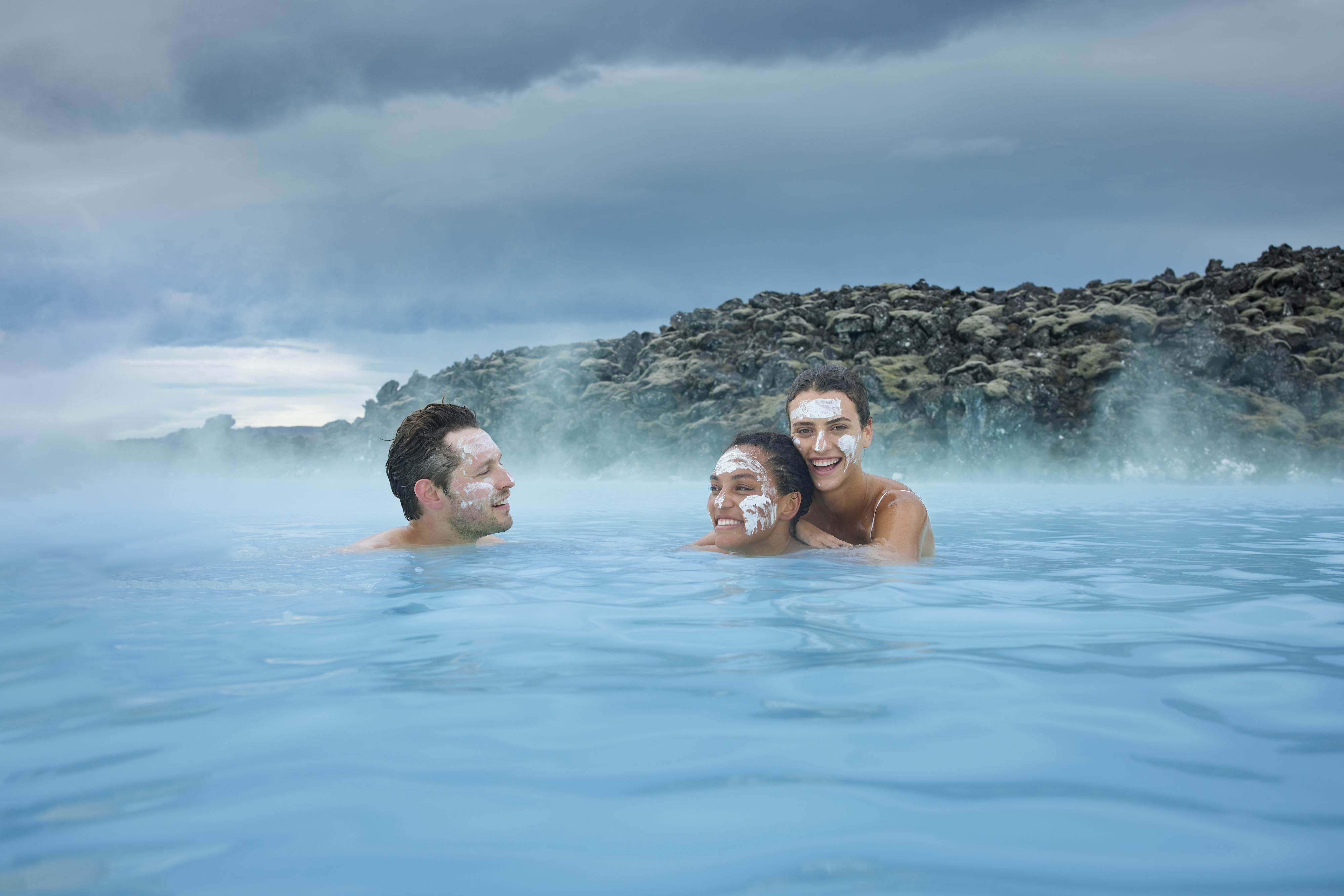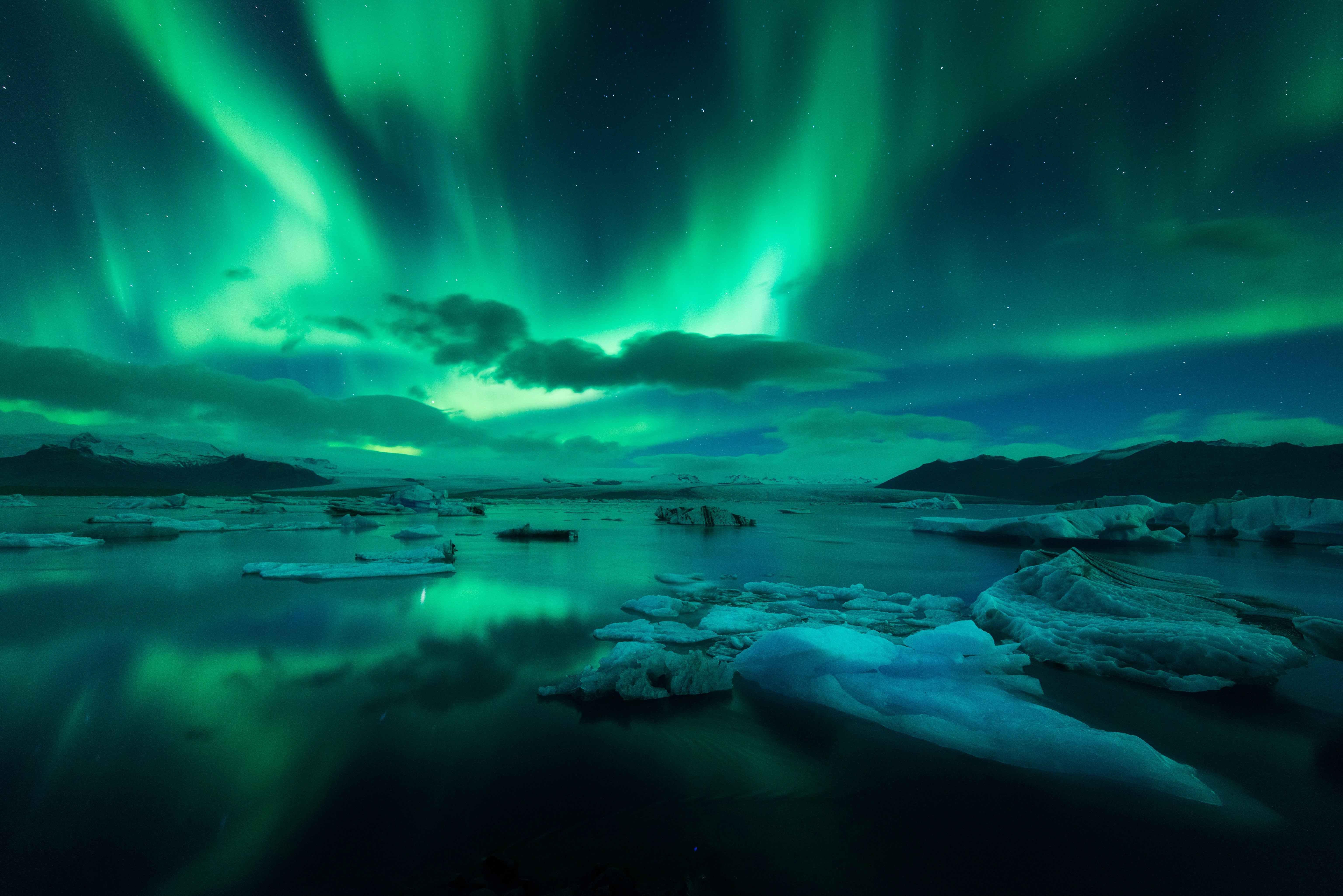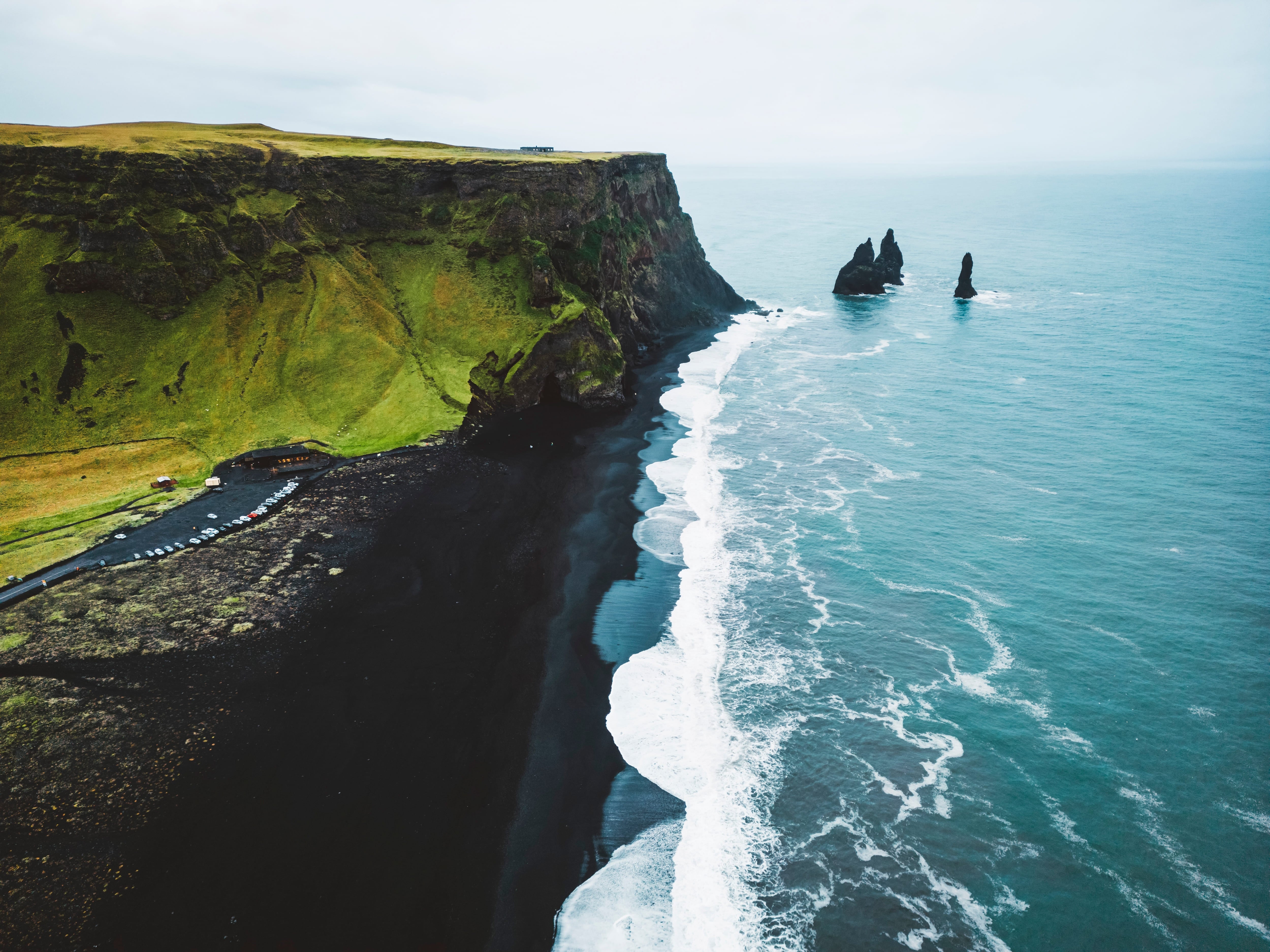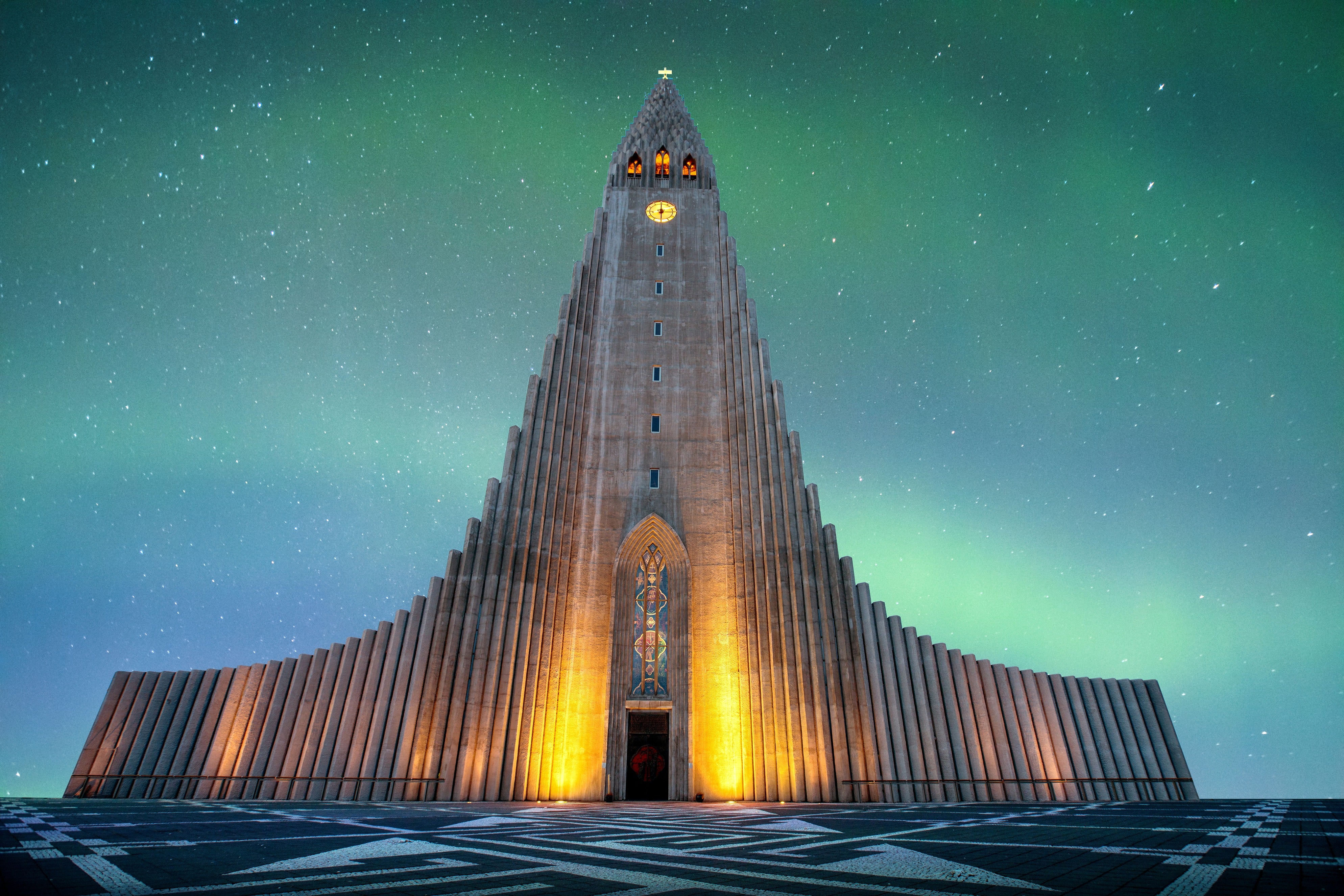
Bringing the right clothes and gear for tours in Iceland is essential when facing the country’s unpredictable weather and navigating its rugged terrain. Iceland’s landscape includes glaciers, lava fields, mountains, and waterfalls, all of which require careful preparation to stay safe and comfortable.
Different tours and experiences in Iceland call for different types of gear. Ice climbing tours demand insulated layers and protective equipment. Glacier tours require waterproof clothing and crampon-compatible boots to navigate icy surfaces safely.
Why You Can Trust Our Content
Guide to Iceland is the most trusted travel platform in Iceland, helping millions of visitors each year. All our content is written and reviewed by local experts who are deeply familiar with Iceland. You can count on us for accurate, up-to-date, and trustworthy travel advice.
For trips that combine elements like water and ice, preparation is just as important. An ice cave tour and waterfall visit involve cold, wet conditions where proper footwear and warm layers are essential. On guided hikes and treks, you’ll need durable shoes, wind protection, and breathable clothing to move comfortably across exposed trails and rough terrain.
Knowing what to pack can make a big difference in how you experience Iceland’s natural beauty. The following guide breaks down what to wear in different seasons and what gear to bring for common activities, so you can explore confidently and responsibly.
Key Takeaways
-
Proper Shoes and Hiking Boots — The right footwear will make or break your Iceland hiking tour or nature excursion. Discover what works best for the season and terrain.
-
The Right Hiking Gear — Preparation is everything when exploring the remote regions of Iceland. Equip yourself with the gear you need to stay comfortable and safe.
-
Make Smart Clothing Choices — Packing a suitcase for a trip to Iceland can be difficult. Knowing what to expect will help you bring proper attire.
- See also: What To Pack for Iceland for All Seasons
The Best Shoes for Iceland Adventures
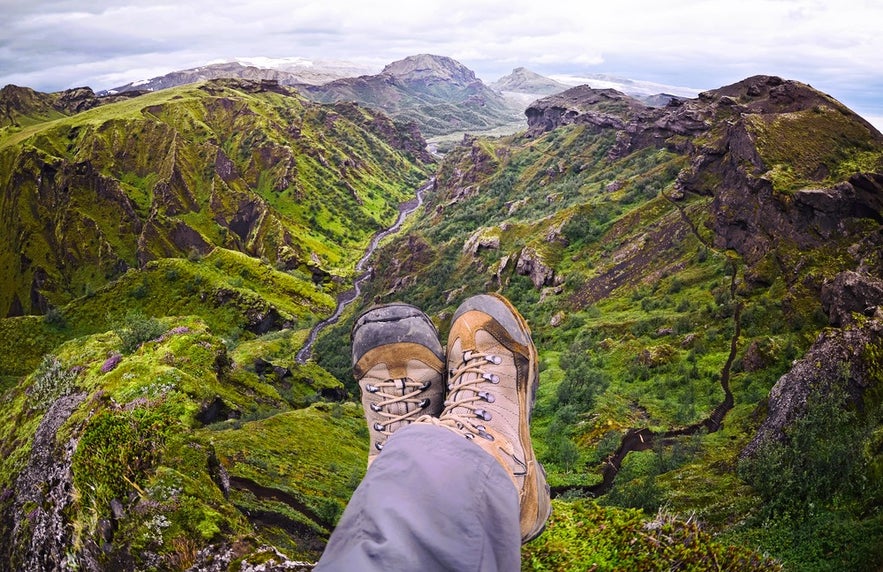 The top item on your packing checklist should be footwear. The most reliable shoes for Iceland are hiking boots with good ankle support. The country’s landscape is rugged, uneven, and often icy, so the sturdier your shoes, the easier time you’ll have hiking and exploring.
The top item on your packing checklist should be footwear. The most reliable shoes for Iceland are hiking boots with good ankle support. The country’s landscape is rugged, uneven, and often icy, so the sturdier your shoes, the easier time you’ll have hiking and exploring.
Shoes for Glacier Hiking
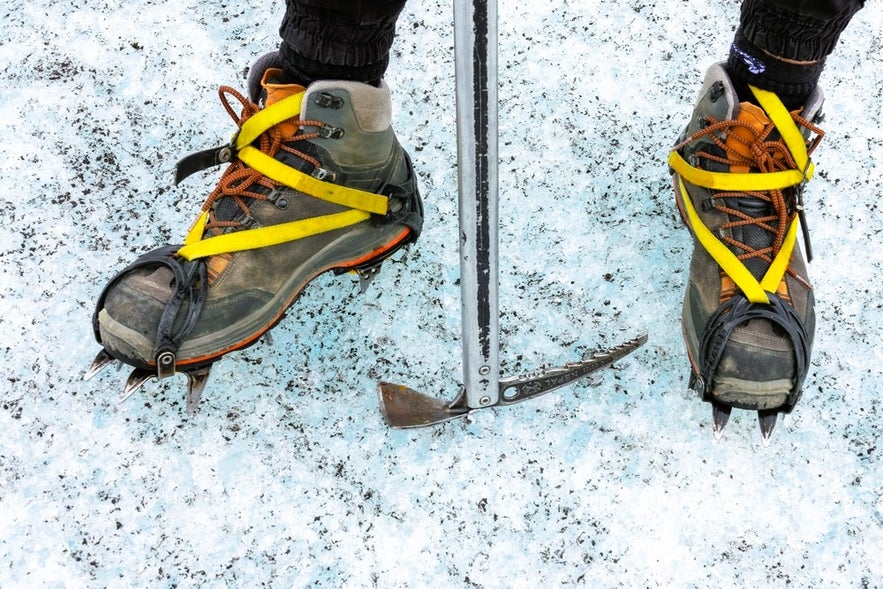 Many glacier tours or guided ice-caving excursions don’t require rigid boots designed for advanced hiking on frozen landscapes. Many glacier or ice caving tours will provide crampons for you, but if your chosen tour doesn't — or you're visiting in winter when crampons are recommended for sightseeing anyway — then we recommend that you rent them. These tools attach to your shoe and help you maintain your footing.
Many glacier tours or guided ice-caving excursions don’t require rigid boots designed for advanced hiking on frozen landscapes. Many glacier or ice caving tours will provide crampons for you, but if your chosen tour doesn't — or you're visiting in winter when crampons are recommended for sightseeing anyway — then we recommend that you rent them. These tools attach to your shoe and help you maintain your footing.
If you forget your hiking shoes or don’t want to buy a brand-new pair for just one tour, such as a glacier hike on Solheimajokull, you can often rent them from your tour provider. You’ll need to check the tour details to see if this is possible.
Top Glacier Tours
These top-rated glacier tours offer unforgettable adventures on and around the country’s most stunning glaciers.
-
The Crystal Blue Ice Cave Tour in Vatnajokull Glacier — Explore one of Iceland’s iconic natural wonders on this original ice cave tour. This is a breathtaking experience you don’t want to miss.
-
The Skaftafell Glacier Hike — Trek along the South Coast at Skaftafell with a certified glacier guide to add excitement and incredible landscapes to your Icelandic adventure.
-
2-Day Guided South Coast Tour With Ice Cave — Experience two days of stunning landscapes and ice caving adventures with an expert guide. See waterfalls, black sand beaches, and the Jokulsarlon Glacier Lagoon.
Shoes for Ice Climbing
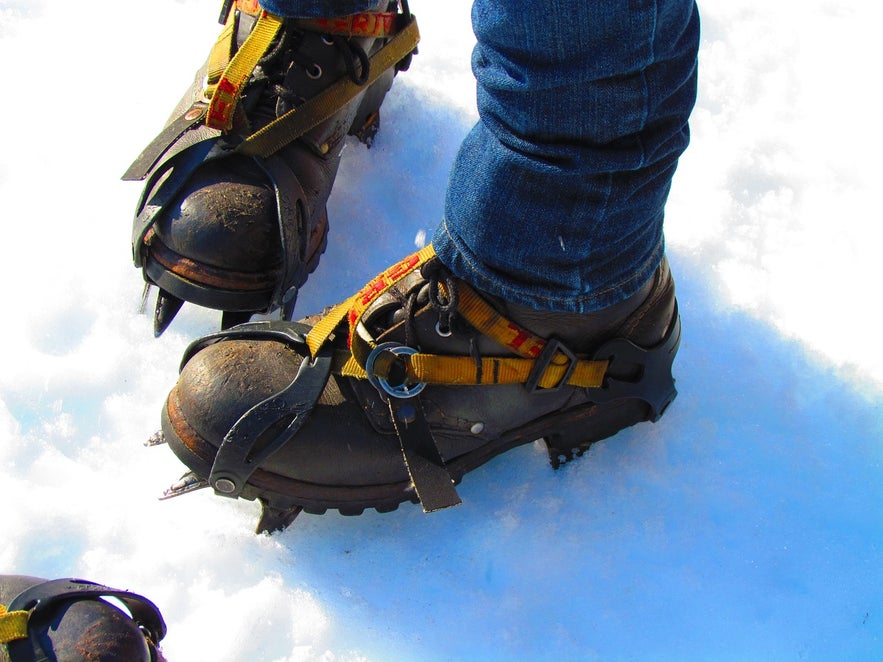
Are you planning a more extreme adventure, like ice-climbing tours? You’ll need a semi-rigid hiking boot that supports your full weight as you scale glacier ridges. Simple hiking boots or running shoes aren’t big enough to attach the crampons required for climbing tours.
Most guided tours provide crampons, so you won’t need to bring your own. However, if you plan on exploring regions like the Westfjords or Highlands on your own, investing in or renting hiking equipment is a smart move.
Top Ice-Climbing Tours
These top ice-climbing tours led by expert guides offer a mix of adrenaline and awe-inspiring scenery.
-
Solheimajokull Ice-Climbing & Glacier Hiking Tour — Enjoy an adventure with certified and experienced guides on a glacier hiking and ice-climbing tour on Solheimajokull Glacier.
-
4-Hour Glacier Hike & Ice-Climbing Tour on Vatnajokull Glacier Starting From Skaftafell — Encounter the raw, untouched beauty of Europe's biggest glacier on this glacier hike and ice climbing adventure.
-
Solheimajokull Glacier Climbing Adventure From Reykjavik — Experience an exhilarating 11-hour guided glacier climbing tour on Solheimajokull.
Shoes for Whale Watching and Sightseeing
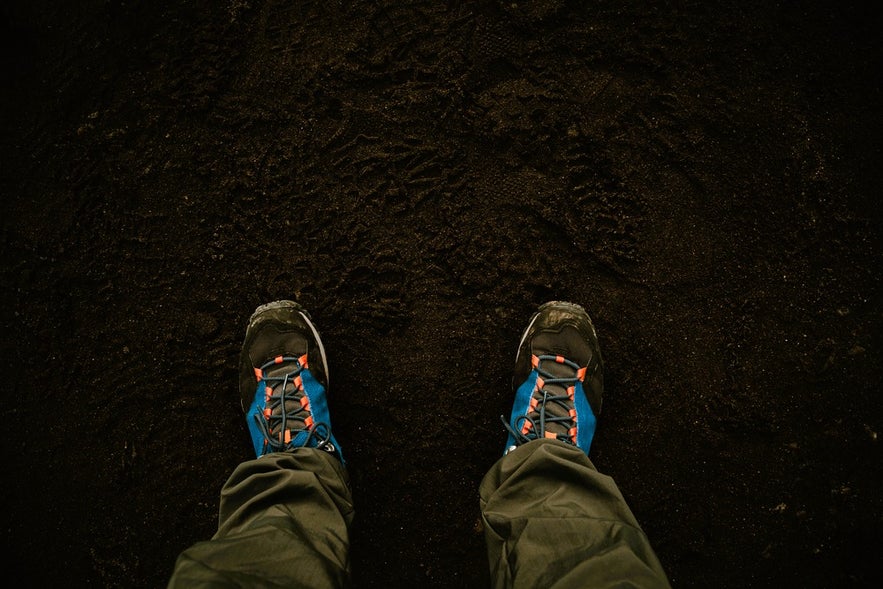 The best footwear for Iceland whale-watching tours is comfortable shoes that keep you steady while on the boat. Walking or hiking shoes are perfect.
The best footwear for Iceland whale-watching tours is comfortable shoes that keep you steady while on the boat. Walking or hiking shoes are perfect.
Golden Circle tours and South Coast excursions don’t usually take you over rough terrain, so running or walking shoes should suffice. However, wear shoes with a good grip if you're planning a summer tour to Gullfoss Waterfall or Seljalandsfoss Waterfall. The wet rocks tend to get slippery.
Pack multiple types of footwear if you’re planning combo tours. Your sneakers may be fine for something like the horseback-riding and whale-watching tour, but not if you’re caving or hiking. But they may get damaged when navigating the jagged, slippery ground of the lava tube.
Top Whale-Watching Tours
These top whale-watching tours offer the best chances to spot these majestic creatures in their natural habitat.
-
The Whale-Watching Tour From Reykjavik — Enjoy this whale-watching tour into the famous Faxafloi Bay in search of these amazing creatures of the deep.
-
The Original Husavik Whale-Watching Tour — Experience the best whale watching in Husavik, the whale-watching capital of Iceland, on a traditional Icelandic oak boat.
-
Whale-Watching Tour From Olafsvik in the Snaefellsnes Peninsula — Set sail and see the marine life of Breidafjordur Bay.
Shoes for City Exploring
 Walking around and touring Reykjavik is a popular tourist activity, regardless of the season. If this is on your itinerary, you can leave your hiking boots in your hotel room. However, you still need to consider comfort and protection from the weather.
Walking around and touring Reykjavik is a popular tourist activity, regardless of the season. If this is on your itinerary, you can leave your hiking boots in your hotel room. However, you still need to consider comfort and protection from the weather.
When exploring Reykjavik, supportive walking or running shoes are best. If you’re visiting in the winter, consider packing waterproof shoes that keep your feet warm and dry, as well as a pair of light crampons.
Sandals are virtually useless in Iceland, even in the summer when the average temperature hovers just around 50 F (10 C). The only expectation is while relaxing on Reykjavik’s Nautholsvik Beach or visiting one of Iceland’s many pools and geothermal spas.
You can wear comfortable shoes for food and drink tours around the capital.
Top City Exploring Tours
Walking tours are a great way to explore Reykjavik’s culture, cuisine, and rich storytelling traditions.
-
Reykjavik Food Walk Tour — Sample local Icelandic cuisine on this six-stop food walking tour.
-
Viking Walking Tour of Reykjavik — Learn about the history of Iceland on this excursion through Reykjavik with your Viking guide.
-
Folklore Walking Tour of Reykjavik — Dive into the depths of Icelandic mythology and folklore through this walking tour through the city.
Essential Iceland Hiking Gear
Whether taking a guided hiking tour or venturing out by yourself, there are several extra pieces of gear you shouldn’t be caught without. In addition to investing in the best hiking boots for Iceland terrain, you’ll need the following:
-
A Water Bottle — Freshwater springs are dotted across many Icelandic hiking trails, but you should bring at least 33 ounces (1 liter) of water per day and only rely on the springs as a backup.
-
A First-Aid Kit — While guides carry first-aid supplies on guided tours, you should also have your own. There’s no such thing as too much precaution when in the wilds of Iceland.
-
Food — Meals are often included on guided multi-day treks, but you must bring your own when hiking solo. Always carry more food than you think you’ll need.
-
Cooking Utensils — These will be provided on guided tours. If traveling without a guide, pack what you need to prepare your meals.
-
A Map and Compass — GPS is excellent, but you should carry a map and compass to navigate the area in case you get lost. It’s also a good idea to register your plans on safetravel so authorities will know where to look for you in case of an emergency.
-
A Phone — Carrying a phone is essential. Most of Iceland is covered by Wi-Fi, so you can call the emergency number “112” and receive a rapid response to an incident.
-
A Tent, Mattress, and Sleeping Bag — Many multi-day hiking tours provide or rent these, so you don’t often need to worry about packing them in your luggage.
-
Sunglasses — Iceland’s summer is bright throughout the whole day, so don’t forget your shades. They’ll come in handy if you’re hiking over glaciers, as the sun’s reflection off the ice can get intense.
-
Sleeping Masks — Speaking of the midnight sun, packing a sleeping mask is often a necessary part of summer hiking and camping if you want to get some shut-eye.
-
Toilet Rolls and Plastic Bags — If nature calls when you’re far from any bathroom, you’ll need to clean up after yourself.
This list isn’t exhaustive, but it gives you an idea of what you need when exploring the remote regions of Iceland.
Clothes To Pack for Your Iceland Trip
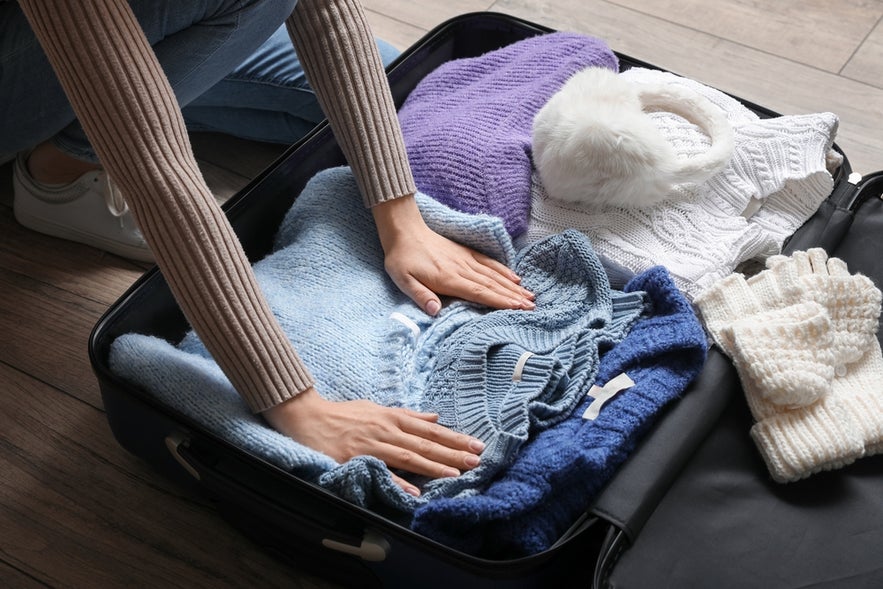 The name “Iceland” tells you a lot about the country’s climate. Iceland in summer is beautiful and lush, but it can still become wet and cold. Winter is breathtaking, but temperatures drop well below freezing.
The name “Iceland” tells you a lot about the country’s climate. Iceland in summer is beautiful and lush, but it can still become wet and cold. Winter is breathtaking, but temperatures drop well below freezing.
Summer Packing Tips
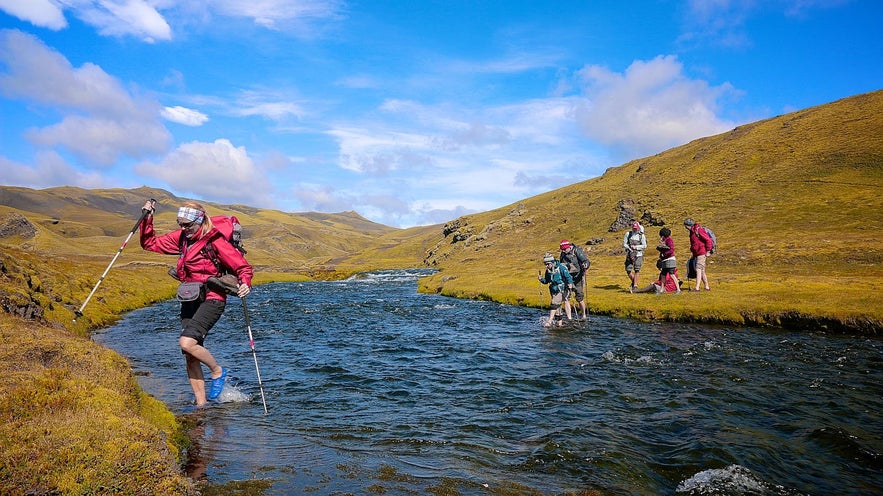
A heavy coat, winter hat, and gloves will make summer glacier tours more comfortable. However, make sure you can shed a layer if you get too warm.
Jeans are fine for urban exploring, but be prepared for sudden showers. Carrying a light, waterproof jacket is recommended.
Don’t forget a swimsuit so you can enjoy Iceland’s geothermal spas.
Winter Packing Tips
When traveling in the winter months, pack thermal underwear, warm layers of wool, and waterproof outer layers. Thick wool socks, gloves, hats, and scarves are all essential for winter vacations.
Many winter tours will help you out if you don’t pack warmly enough for their requirements. For example, guided snowmobiling tours and ATV excursions offer free overalls you can borrow. Waterproof jackets and pants can be rented for most glacier hikes and caving tours.
FAQs About Packing the Best Shoes, Clothes, and Gear for Iceland
Knowing what to pack can make or break your experience, so it’s normal to have questions before your trip. Below, we’ve answered some of the most common questions travelers have when preparing for Iceland’s unpredictable conditions.
What’s the best material for hiking boots in Iceland?
Leather and Gore-Tex are the best materials for hiking boots in Iceland, as they’re waterproof and durable.
How long should I break in my hiking boots before my trip?
At least 2 to 4 weeks. Wear them on walks and short hikes to avoid blisters.
Are trail running shoes okay instead of hiking boots?
For easy, dry trails, yes. For longer hikes and wet or rocky terrain, hiking boots are much better.
What’s the best jacket for Iceland?
A waterproof, windproof, and breathable jacket (Gore-Tex) is essential year-round.
Is an umbrella useful in Iceland?
No. Icelandic winds are too strong. A good waterproof jacket with a hood is much more practical.
Do I need bug spray in Iceland?
No. Iceland has no mosquitoes. However, in summer, there can be midges near lakes, so a head net may help if you visit places like Myvatn Lake.
What’s the best backpack for Iceland?
A waterproof daypack is ideal for carrying essentials like snacks, extra layers, and a camera.
Are hiking poles necessary in Iceland?
For challenging hikes like the Fimmvorduhals and Laugavegur trails, hiking poles can help with stability. Not needed for casual hikes.
Do I need an eye mask for sleeping?
In summer, yes. The midnight sun brightens the sky all night.
What type of bag should I bring?
A waterproof daypack is best for hikes and day trips. The rest of your clothes, gear, and supplies not needed for the hike should be in a medium-sized suitcase made of weather-resistant material.
Pack Your Bags
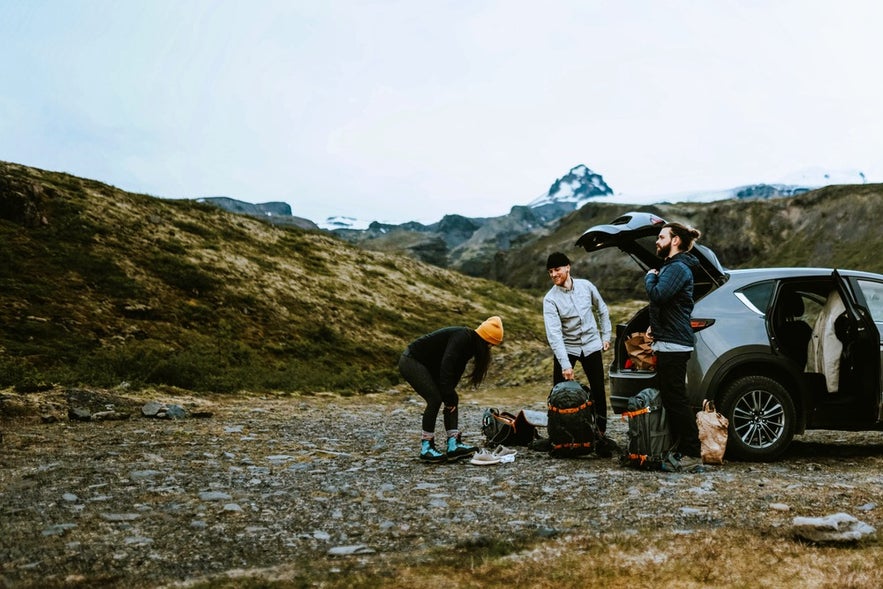 With your packing list meticulously checked, the right footwear chosen, and essential gear secured, you’re nearly ready to embark on your Icelandic adventure. Take time to savor the breathtaking landscapes, from thundering waterfalls to serene fjords. Immerse yourself in the local culture, sample traditional cuisine, and connect with the friendly people you meet along the way.
With your packing list meticulously checked, the right footwear chosen, and essential gear secured, you’re nearly ready to embark on your Icelandic adventure. Take time to savor the breathtaking landscapes, from thundering waterfalls to serene fjords. Immerse yourself in the local culture, sample traditional cuisine, and connect with the friendly people you meet along the way.
Do you think you’re ready to pack for any experience Iceland has to offer? Are you traveling in summer or winter? Tell us about your Iceland tour plans in the comments below.

